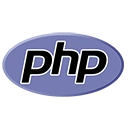PHP is a popular and versatile server-side scripting language used to build dynamic websites and web applications. However, like any other technology, PHP is susceptible to security vulnerabilities. In this guide, we'll explore essential PHP security practices to protect against common vulnerabilities:
1. Input Validation
Always validate and sanitize user input to prevent common vulnerabilities such as SQL injection, Cross-Site Scripting (XSS), and Cross-Site Request Forgery (CSRF). Use functions like
filter_var() $username = filter_var($_POST['username'], FILTER_SANITIZE_STRING);
2. Password Hashing
Store passwords securely by using password hashing functions like
password_hash()password_verify() $hashedPassword = password_hash($password, PASSWORD_DEFAULT);
3. Session Management
Implement proper session management to prevent session fixation and session hijacking. Use built-in PHP session handling functions and regenerate session IDs to ensure security.
session_start();
4. Cross-Site Scripting (XSS) Prevention
Protect against XSS attacks by validating and escaping user-generated content. Avoid using
echohtmlspecialchars() echo htmlspecialchars($userInput, ENT_QUOTES, 'UTF-8');
5. SQL Injection Prevention
Prevent SQL injection by using prepared statements with parameterized queries when interacting with databases. Avoid building SQL queries by concatenating user input.
$stmt = $pdo->prepare('SELECT * FROM users WHERE username = ?');
$stmt->execute([$username]);
6. File Upload Security
If your application allows file uploads, validate and limit file types and use unique names to prevent malicious file execution. Store uploads outside the web root directory to avoid direct access.
// Validate file type and size
if ($_FILES['file']['type'] == 'image/jpeg' && $_FILES['file']['size'] < 1048576) {
// Process the file
}
7. Secure Configuration
Review and secure your PHP configuration. Disable unnecessary PHP functions and features, use HTTPS for secure data transmission, and implement proper error handling to prevent information leakage.
8. Regular Updates
Keep PHP and its associated software, including web servers and databases, up to date. Regular updates patch security vulnerabilities and ensure the latest security features.
9. Security Libraries
Consider using PHP security libraries and frameworks like Symfony Security Component or OWASP's PHP Encoder to automate security practices in your application.
10. Regular Auditing and Testing
Regularly audit your code and perform security testing. Tools like static code analyzers, web application scanners, and penetration testing can help identify and fix vulnerabilities.
Conclusion
PHP security is a critical aspect of web application development. By following best practices, validating input, and staying informed about the latest security threats, you can protect your PHP applications against common vulnerabilities and ensure the safety of your users' data.

